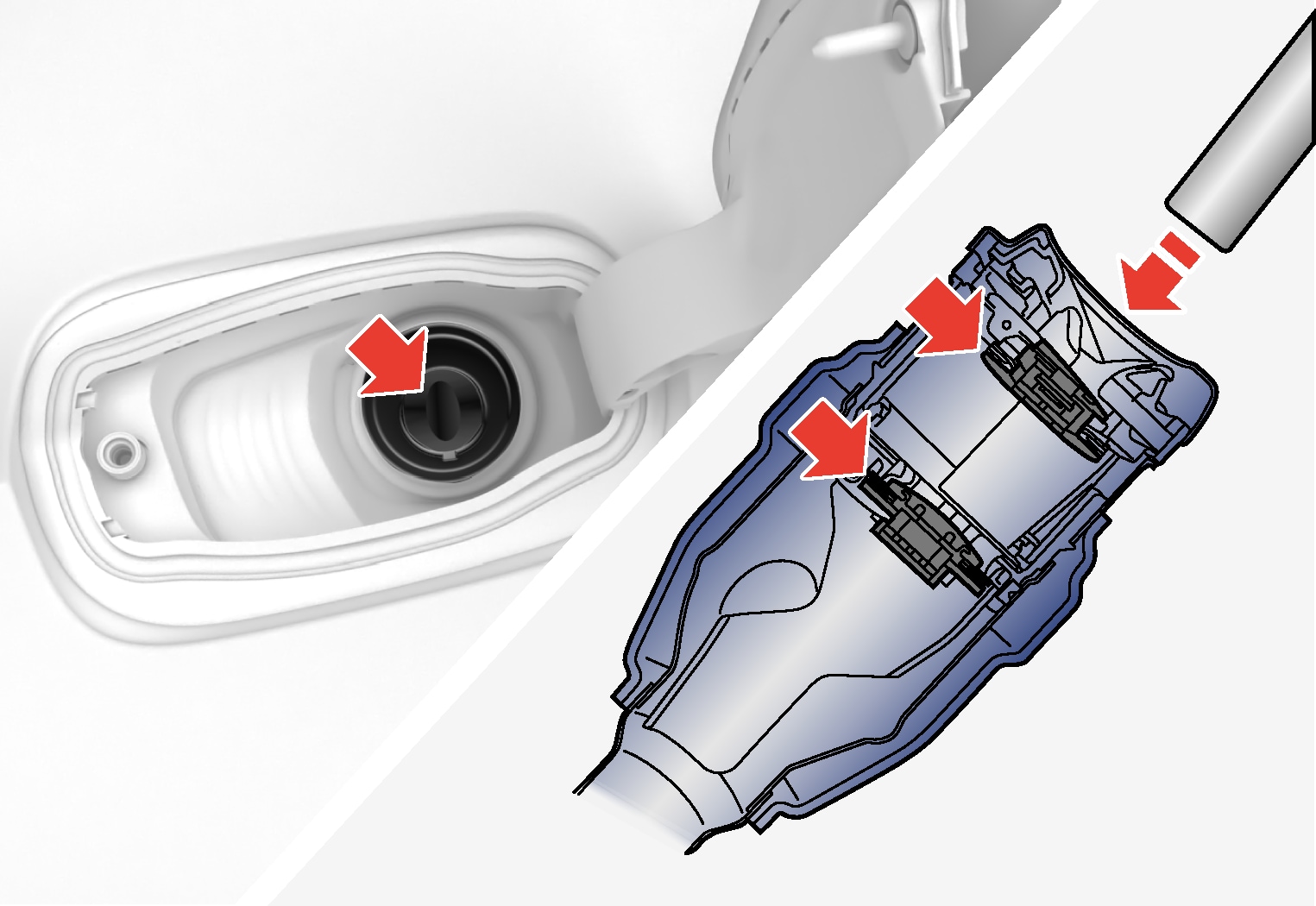Refueling
Refueling the vehicle at a service station

Note
Refueling must be done within approximately 15 minutes of opening the fuel filler door. After this time, the valve opened by pushing the button for opening the fuel filler door will close and it will no longer be possible to refuel without the pump's nozzle switching off.
If the valve is closed before refueling is complete - press the button again and wait until the driver display shows the message Fuel tank Ready for refueling.
Select a fuel approved for use in the vehicle. For more information on approved fuels, see the section on “Fuel”.
Note
Important
Refueling from a fuel container
When refueling from a fuel container, use the funnel stowed in the side storage compartment in the trunk.
Warning
California Proposition 65
Operating, servicing and maintaining a passenger vehicle can expose you to chemicals including engine exhaust, carbon monoxide, phthalates, and lead, which are known to the State of California to cause cancer and birth defects or other reproductive harm. To minimize exposure, avoid breathing exhaust, do not idle the engine except as necessary, service your vehicle in a well ventilated area and wear gloves or wash your hands frequently when servicing your vehicle. For more information go to www.P65Warnings.ca.gov/passenger-vehicle.





